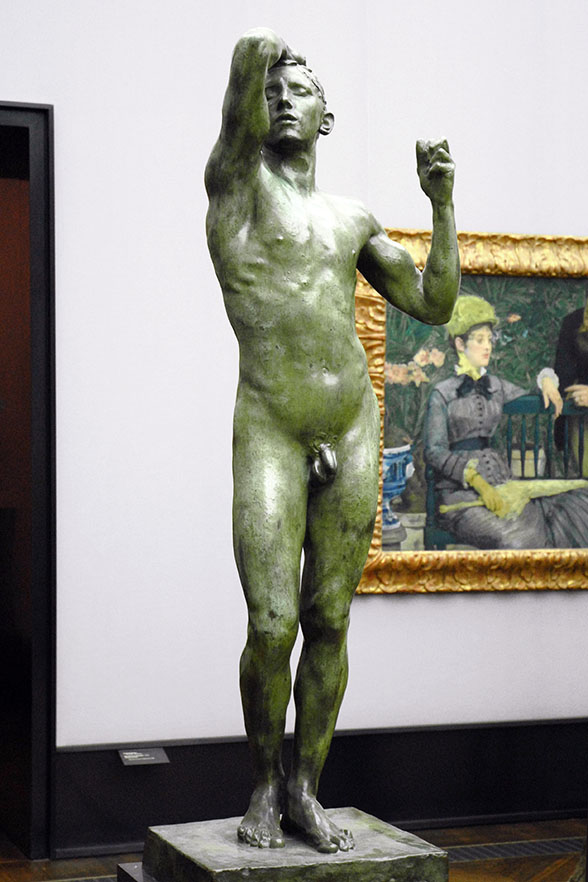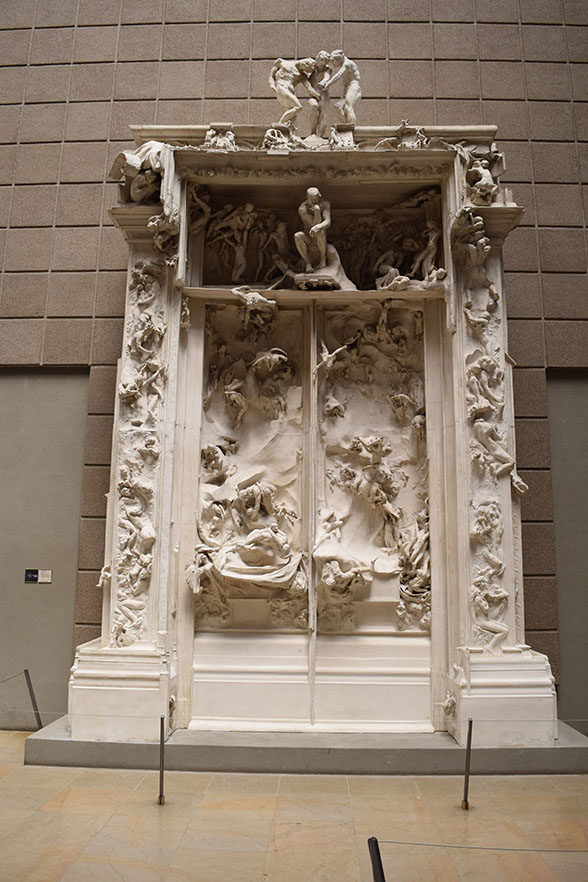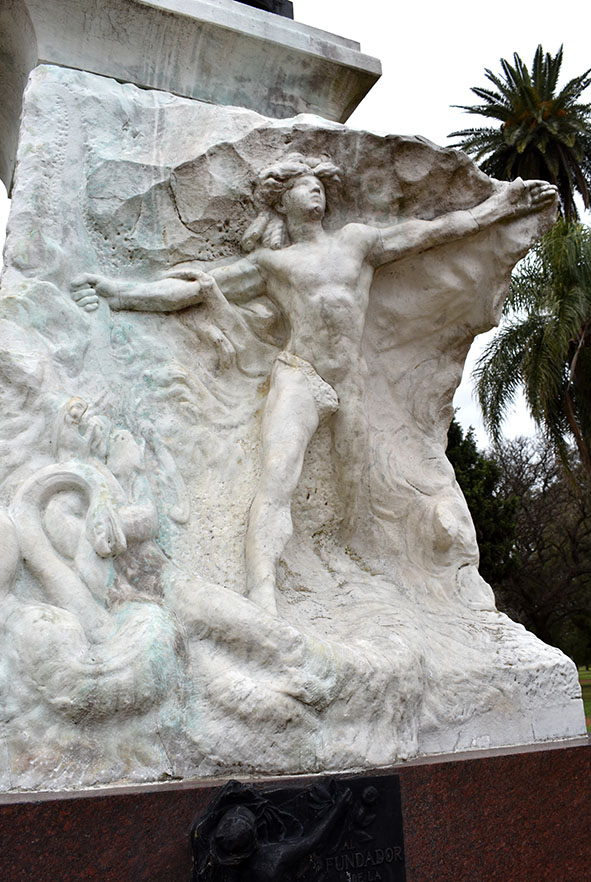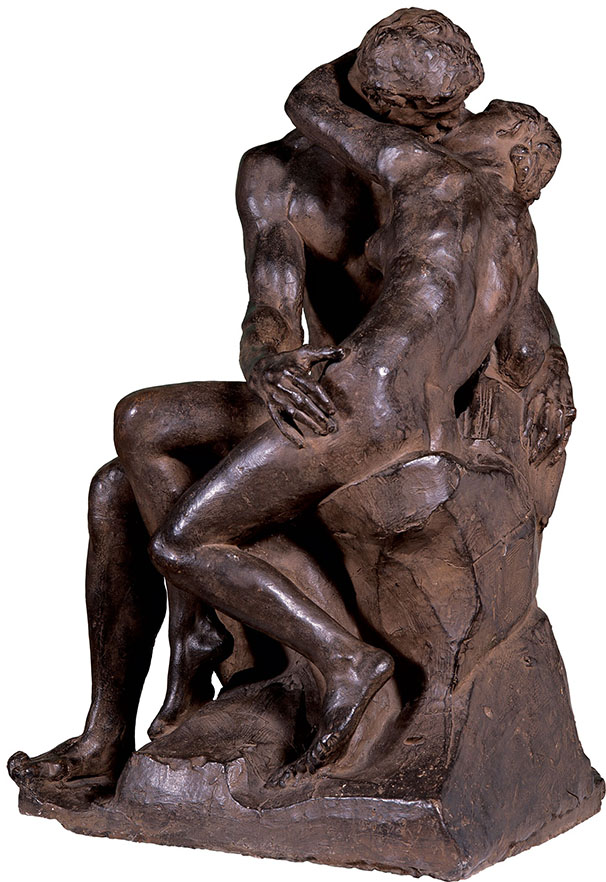From the appearance of the Venus of Willendorf on the banks of the Danube, a small piece that exalted the fertility and reproduction of the human species, to the arrival of Damien Hirst's shark in formaldehyde and its tribute to death, sculpture has traveled through very diverse paths. For centuries, great figures of universal history were immortalized in important monuments that still exist, and both the halls and the gardens were adorned with classic academic figures that needed to be perpetuated in the imitation of visible reality. Until the moment came when someone, perhaps Miguel Angel Buonarotti without intending to, changed the essential meaning of the sculpture to transform it into a different expressive manifestation. The “Pietá Rondanini” or some of his “Slaves of Him” put the viewer in front of a different situation. Pain appears as if emerging from matter itself, and the polished Renaissance marble that invited us to explore perfection is transformed into a living being that suffers and feels.
Detail with his signature. Photography: Hilario. Arts Letters Trades.
This is how Pierre Aguste Renée Rodin (Paris, November 12, 1840 - Meudon, November 17, 1917) understood it, considered the father of modern sculpture and the first to definitively break with all academic canons. His beginnings away from traditional channels were with the great animal sculptor Antoine Louise Barye, with whom he modeled small figures in the Natural History Museum of his hometown.
In 1855, like so many other artists, he began working in clay, practicing at the Louvre Museum. His self-taught condition was not entirely easy for him when evaluating his early works, but his natural talent far surpassed the criticism of his contemporaries, something that Rodin did not take into account either.
He developed intense activity from an early age. He participated in the urban reconstruction of Paris with Georges Haussmann, and in 1865 he met the sculptor Jean Baptiste Carpeaux, who helped him in the creation of his first important work, “The Man with the Broken Nose,” which was only accepted into the Academy in its version made in marble, ten years later. Time and moving forward on several jobs simultaneously were never a problem for Rodin.
Broken nose man mask. Soumaya Museum, Mexico City.
To support himself financially, since he lacked regular income, he collaborated in the workshop of Ernest Carriere Belleuse, even signing some of his works. During that time of learning, and on a trip to Italy to get to know the great Renaissance sculptors up close, he met Rose Beuret who would be his life partner and his model for one of the best portraits he made, a bronze titled “Mignon.” (1870, Rodin Museum, Paris) which has an astonishing firmness of modeling. Her face emerges from an almost abstract base of leaves that intermingle with her hair in undulating rhythms. The expressive quality and capture of the character's character is notable.
Mignon (1870) by Auguste Rodin. The bust represents the heroine of a comic opera by Ambroise Thomas. Musée Rodin, Paris.
In June 1875 he began to work in Brussels with a Belgian soldier who would serve as a model for the creation of his first great sculpture “The Age of Bronze”, previously titled “The Vanquished” [Rodin Museum, Paris, 1876/1877]. Not only the influences received in Italy but also the contact with Flemish baroque sculpture, definitively freed him from academicism to create this work that was presented in 1877, causing astonishment and scandalizing spectators due to the audacity of its creation. In bronze, a living, vibrant being emerges, which excites and at the same time generates a true battle by signaling the beginning of a new vision of sculpture opposed to official art. It seemed impossible that a self-taught person could have created such perfect shapes.
In the following years, each work exhibited by Rodin attracted the attention of the public. His sculptures respect nature, and demonstrate his desire to interpret it without producing servile copies. As a whole, his production is based on deeply human roots since he has the gift of capturing and representing the transience of an impression, a gesture, a pose. In his immobile characters, we perceive almost an extension of his inner life.
He experienced enormous joy when he worked. “I always lived like a worker, but the happiness of working made me invariably overcome any difficulty. I'm barely inactive, I get bored. Rest is monotonous, and evokes the sadness of everything that ends. I feel that working is like living forever” he confesses to his great friend Reiner Maria Rilke.
In 1880 he was commissioned to decorate the door of the Palace of Decorative Arts on the banks of the Seine and in front of the Tuileries Palace. It will be the greatest plastic challenge of his life. For this, the State provides him with a workshop and for this order he will be paid the sum of 8,000 francs. These so-called “Gates of Hell” were conceived remembering those of the Baptistery of Florence, by Lorenzo Ghiberti, and without a doubt “Hell” by Dante Alighieri, and “The Flowers of Evil” by Charles Baudelaire. A large number of extraordinary and tragic drawings are a clear testimony of these inspirational reasons.
At first he studied the subdivision of the door into four panels separated by a narrow frieze with foliage motifs, but later he changed the conception, replacing the original idea with a totally different one, arranging the scenes on a frameless background, just as Michelangelo ordered. the scenes of the “Last Judgment”. He thus obtains a much more dramatic effect and a three-dimensional space. Figures and groups emerge chaotically from the immense mass of plaster.
The “Gates of Hell” were exhibited for the only time at the Universal Exhibition in Paris in 1900, incompletely at the Place D’Alma along with one hundred and fifty works including sculptures and drawings. Rodin extracted several of his important figures from the plaster original that is today in the Musée d'Orsay in Paris. After the artist's death, eight bronze castings of this monumental work were made and are currently found in different museums around the world. The making of it lasted for thirty-seven years, from 1880 to 1917. Camille Claudel, his student, model and lover, constantly collaborated with him in the arduous realization of the work. Although the initial enthusiasm for such a project stimulated him with passion, he also went through some periods of unease where he interrupted the works, which greatly prolonged their completion.
Some of the sculptures that make up the best sectors of “The Gates of Hell” were separated from the set, and were cast in bronze to be acquired by famous collectors. It has been an inexhaustible source of motives for Rodin. This is how “Adam”, “Eve”, “The Specter”, “The Thinker”, “The Martyr”, “Ugolino and His Children” and “The Kiss” were born. In our National Museum of Fine Arts, a marble copy of the latter is exhibited, where you can see the ease with which Rodin managed the twists of the figures emerging from the inert material.
The thinker, one of the sculptures that are part of The Gate of Hell. Here, the specimen found in the gardens of the Musée Rodin in Paris.
In 1884, the city of Calais resumed the project to build a monument in honor of “The Burghers of Calais” whose epic took place during the Hundred Years War, in honor of one of its heroes Eustache de Saint Pierre, represented at the moment when they try to save the besieged city. Once the naked figures have been outlined, he covers them in such a way as not to alter the aesthetics, grandeur and drama of the whole.
Les Bourgeois de Calais, a work by Rodin located in the Mariemont Park, in Belgium.
Among the great characters that he had the honor of capturing, the writer Victor Hugo and the novelist Honoré de Balzac stand out. He chose to represent Hugo in exile, on the rocks of the island of Guernsey. The sculptural group that shows the poet naked and surrounded by The Muses was rejected by the Fine Arts Commission but finally approved by public opinion. It was converted to marble and today it is located in the Luxembourg Gardens.
Following the suggestion of Emile Zola, the Commission of the “Societé des Gens de Lettres” decides to entrust him with a sculpture by Balzac. Here Rodin is presented with a double problem: approaching the human aspect of him and interpreting his strong inner personality. He prepared nineteen studies for the head alone, made an enormous number of sketches, studied clothing, until finally the monument was exhibited in 1897, once again causing another scandal in the history of sculpture. Rodin would later declare “This sculpture that they laughed at so much, that they mocked because they could not destroy it, is the fruit of my entire life's work, the focal point of my entire aesthetic conception.” In our National Museum of Fine Arts there is an extraordinary bronze of Balzac's head, donated in 1980 by Mrs. Mercedes Santamarina.
Rodin gradually renounces all circumstantial details and useless embellishments, becoming interested only in the gestures and character of his characters. He prefers bronze for male portraits and reserves the delicacy of marble for female ones.
In 1889 he exhibited with Claude Monet at the Georges Petit Gallery, both of them achieving colossal success. Both artists, who only had the year of his birth in common, revolutionized the new plastic language with their magnificent unfinished forms and exceptional handling of light.
To be in contact with nature, in 1895 he bought the Villa de Brillantes in Meudon at auction. There he began to be interested in antiques that are still preserved intact and set up a workshop with fifty collaborators including sculptors, workers and moulders.
The same year he made the sculpture of President Domingo Faustino Sarmiento that was inaugurated in the Palermo Gardens of the City of Buenos Aires on May 25, 1900 in the context of the commemorative celebrations of the May Revolution of 1810. The monument was commissioned by the National State, and at the time it caused the displeasure of some neighbors because they considered that the figure had no resemblance to the hero, and that it had also been placed in the Tres de Febrero Park where Juan Manuel de Rosas lived at the time. Sarmiento's staunch enemy.
In 1902, Rilke suggested that he make seven marble sculptures that were acquired by Baron Thyssen Bornemisza. Today they are part of the collection of Mrs. Carmen Cervera, and can be enjoyed at the Thyssen Museum in Madrid.
In 1909, the project of donating all of his work to the French State, preserved in the Hotel Bion in Paris, was contemplated. In January 1917 he finally married Rose Beuret, who was unconditional to him despite her multiple extramarital relationships.
That same year he contracted a severe flu and died on November 17 at his home in Meudon. The sculpture of the “Thinker” was placed on top of the coffin as he had arranged, and national tributes were avoided in the wake of the Great War.
Rodin used to make his pieces in plaster, wax and clay in the traditional way, and once he was satisfied, his assistants were in charge of reproducing them. From these plaster molds it was possible to transfer them to marble or cast them in bronze under the supervision of the master.
For bronze casting he preferred the lost wax procedure, a technique that has been used for five thousand years. The foundries that worked for Rodin were Susse Freres, Barbedienne, and Eugene and Alexis Rudier.
With marble he emphasized the work of the body, and like many of his contemporaries he resorted to the support of sculptors and different collaborators. This caused harsh criticism, questioning the originality of his work. But Rodin attentively followed the process, corrected, intervened, and finished all the details with a chisel.
He knew how to critically confront his surroundings and thus managed to revolutionize the concept of sculpture. His work was crucial to the beginning of modern art. He directed his attention to the true and highlighted the beauty. He also modernized the way public monuments were conceived, changing the way heroes were represented. Instead of sculpting courage, he gave space to the fears and frustrations of his characters. Humanizing was synonymous with modernizing. He made light the main protagonist just as the impressionist painters did. He rescued sculpture at a time when it was marginalized to a mere decorative role. He freed her from her traditional role, giving her the possibility of interpreting the human soul with its passions and sufferings.
Rodin is the sculptor of pain and that is why his art responds to the anguish of the modern world.
* Special for Hilario. Arts Letters Trades



